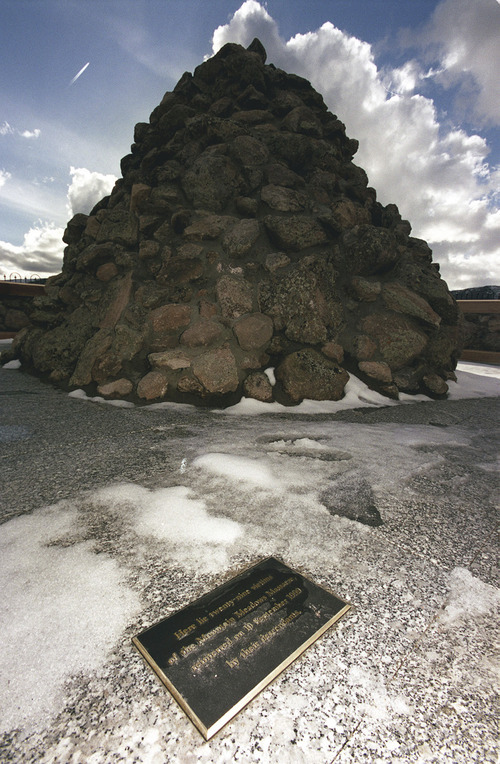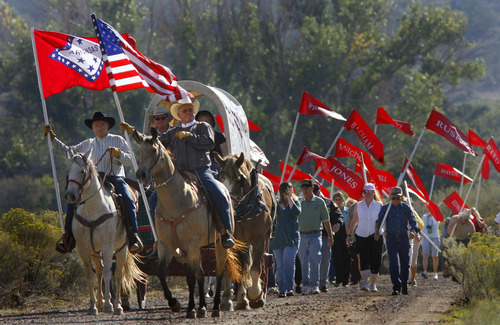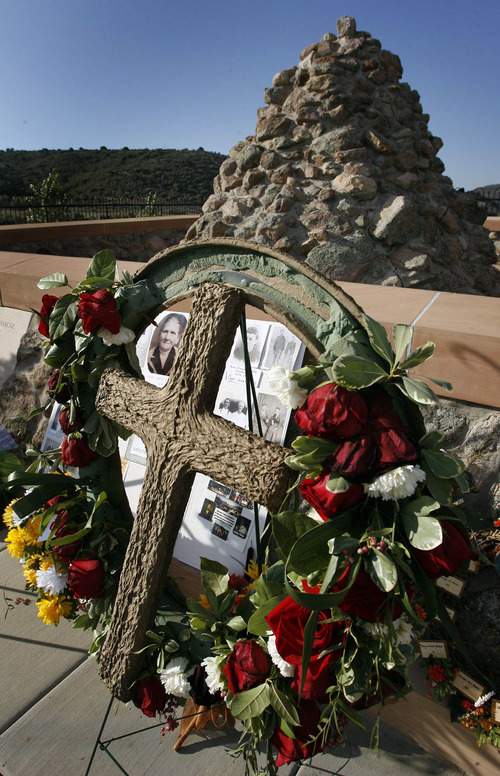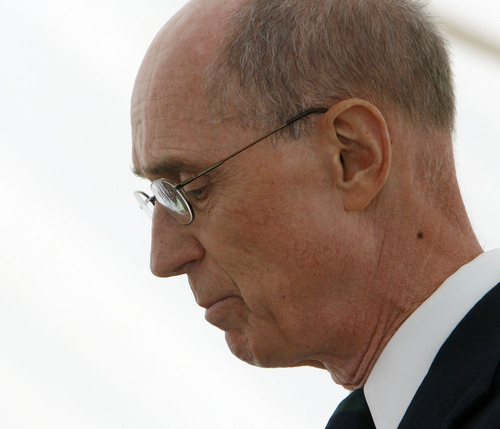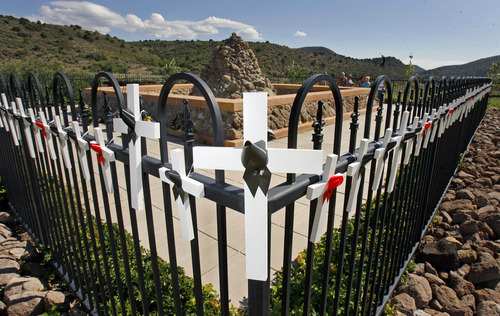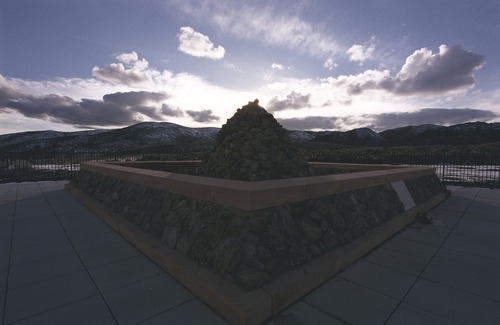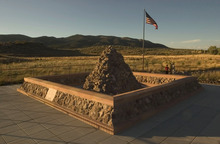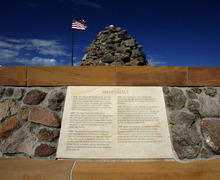This is an archived article that was published on sltrib.com in 2011, and information in the article may be outdated. It is provided only for personal research purposes and may not be reprinted.
Patty Norris, whose great-great-great grandfather and seven other relatives were murdered at Mountain Meadows more than 150 years ago, was overcome with emotion at Thursday's news that the southwestern Utah site has been designated a national historic landmark.
"I'm ecstatic and excited. It's overwhelming," Norris said from her northern Arkansas home. "I'm sure that all those who died out there that day would be extremely proud and grateful for those who have worked on this for so long."
Norris, president of Mountain Meadows Massacre Descendants, was responding to Interior Secretary Ken Salazar's announcement designating 14 new national historic landmarks, including the Washington County location where Mormon militiamen slaughtered 120 California-bound men, women and children in the Fancher-Baker wagon train on Sept. 11, 1857.
"The designation means the United States has recognized that this site is among the most important in U.S. history," said Lysa Wegman-French, a historian with the Intermountain regional office of the National Park Service. "I like to compare it to the Emmy or Oscar awards for actors. This is public recognition of the importance of the site to the nation."
The move is "a dream of a lifetime, that started with some of our fathers and grandfathers, going back to the 1950s," Terry Fancher, president of the Mountain Meadows Association, said from his Boston-area home. "That's how long people have wanted to do something at that site to improve it."
Phil Bolinger, president of Mountain Meadows Monument Foundation Inc., said the move was his group's "top priority."
"We hope we can get Secretary Salazar to join us in September," said Bolinger, on vacation in Florida, "for the designation ceremony."
All three groups give credit for the designation to the extraordinary alliance that has emerged in the past few years between descendants and the Utah-based LDS Church.
"This is the culmination of a multiyear collaboration between the church as landowner, victim groups and the federal government," Richard Turley, assistant LDS Church historian, said Thursday. "We are grateful that so many people came together to make this a reality."
The Church of Jesus Christ of Latter-day Saints will continue to manage the part of the site it owns, while the U.S. Forest Service will oversee its portion of the property 35 miles southwest of Cedar City.
"Our hope has been that we can have this property be a fitting memorial to those whose lives were tragically and wrongly taken in September 1857," said Turley, who co-wrote the critically acclaimed 2008 book Massacre at Mountain Meadows. "We want to have the land preserved so that it retains the sense of historicity it has had."
The drive to make the site a national historic landmark began earnestly in 2007, when LDS leaders gathered at Mountain Meadows with the three descendant groups, Paiutes and others for a 150th anniversary memorial service to honor the victims of the massacre.
At that time, Henry B. Eyring, then an LDS apostle, now a member of the church's governing First Presidency, acknowledged that the responsibility for the massacre rested with regional LDS leaders who also held civic and military positions and with members of the church acting under their direction.
"What was done here long ago by members of our church represents a terrible and inexcusable departure from Christian teaching and conduct," Eyring said at the service. "We cannot change what happened, but we can remember and honor those who were killed here."
The site already was on the National Register of Historic Places, but descendant groups pushed the LDS Church to join the effort to make the site a national landmark, a designation with more stringent requirements that would guarantee public access to the land and bring more visibility to the massacre.
Six months after the 150th anniversary, Marlin K. Jensen, an LDS general authority and the church's official historian, announced that the faith supported the landmark effort.
In November 2010, Turley presented the nomination to the National Historic Landmark subcommittee in Washington, D.C, with descendant groups looking on. Then, in April, the Landmark Advisory Board voted on the proposal.
It passed unanimously, Wegman-French said.
The designation is "honorific," she said, meaning that the LDS Church and Forest Service retain ownership and management of the property.
"If the owners ask for assistance or advice about preservation, we are happy to provide it to them," Wegman-French said, "but they don't have to follow our suggestions."
"Utahns already know of the site's historic significance," Rep. Jim Matheson, D-Utah, said in a statement."Now, because of this designation, it will become better known to the rest of the country."
Matt Canham contributed to this report. —
About the massacre
On Sept. 11, 1857, 120 men, women and children in the Fancher-Baker wagon train were murdered at Mountain Meadows by a group of Mormon settlers. The massacre is considered one of the darkest chapters in LDS Church history and has been an enduring topic of debate as to what really happened in the days leading up to the massacre.



